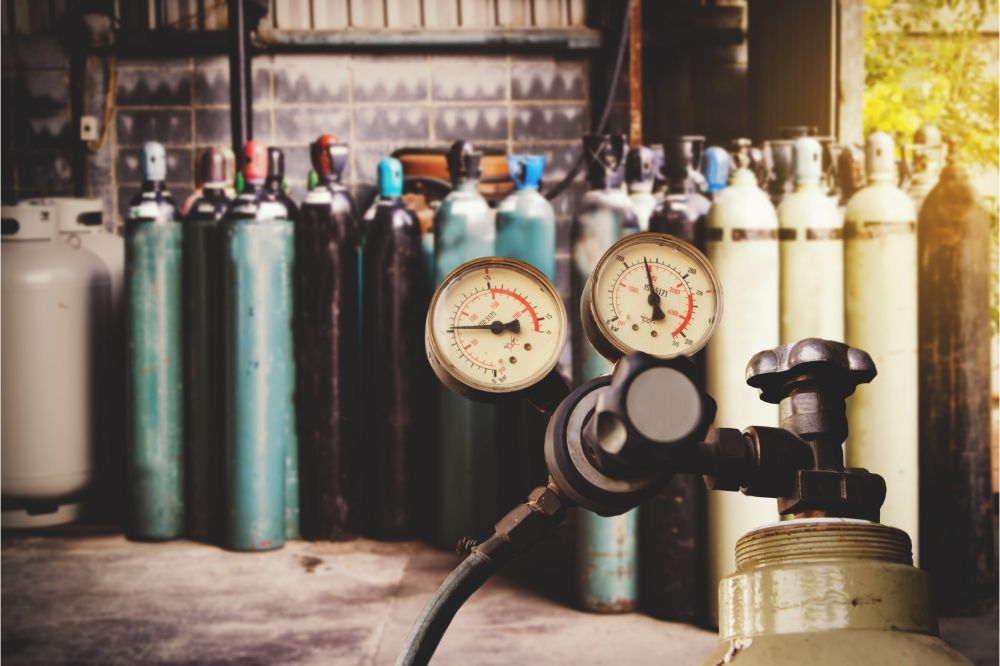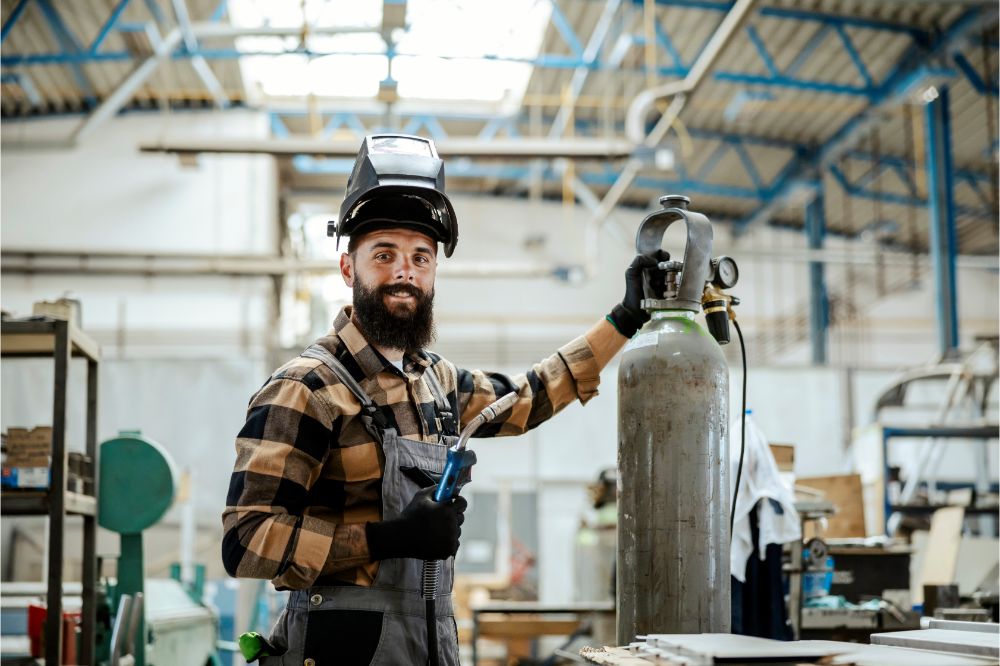There are four types of welding, and if you’re a beginner in the industry, MIG or Metal Inert Gas welding is the best type for you. Once you’ve decided on your choice, the next step is to find out more about MIG welding, specifically what gas is needed. To help you out, we’ve done some research on a few things, such as:
- What are the different gas types?
- Which type does MIG welding use?
- How and why do you use certain gases for certain metals?
- What are inert gases and semi-inert gases?
- Which metals fall under nonferrous?
- The dangers of using a single gas or a combination of gases.
Currently, there are 10 gas types you can use in welding. Each gas type has its advantages and disadvantages. Another common option is to create your own gas mixtures using two or more gases, provided you have enough experience with chemicals to safely combine two or more without harming yourself or your surroundings. We’ve put together an easy-to-browse-through guide on the most important things to consider, starting first and foremost with a quick explanation of MIG welding and inert gases.
MIG and Gas Types
MIG welding has high productivity rates. However, the different metal types require a certain category depending if they are nonferrous metals or ferrous metals. There are two categories of gases used in welding. Inert and reactive. Reactive gas is mainly used for ferrous metals. And while that is possible with MIG welding, there are other more efficient types of welding to use instead of MIG.
Between the two options, you have over 10 gas types. However, in MIG welding or Metal Inert Gas welding, you mainly focus on inert and semi-inert gases. Of these, you’ve got your inert gases:
- Argon gas
- Helium gas
And the active gases:
- Carbon dioxide
- Oxygen
Of these gases, only helium and argon are used as pure gases. Oxygen and carbon dioxide are used in either helium or argon mixtures or both to create semi-inert gases. Chemically, inert gases consist of noble and compound gases, such as Argon and Helium. Both types can be used together or separately in welding applications. In our research, mixed gases can be as useful as pure blends.
The chemicals in these gas mixtures stop degrading nonferrous metals such as aluminum, stainless steel, and magnesium. However, not all inert gas options give the same result. For instance, stainless steel is a metal type with low thermal conductivity and works best with a stainless steel weld mixture of carbon dioxide, argon, and helium. Furthermore, aluminum MIG welding requires inert gas welding with either pure argon or helium. Argon gas is considered the best.
Depending on the percentage of gases you use, your weld could yield different results. Productivity increases when you know how best to manipulate your gases to make a more efficient welding process. Sometimes this means using inert or semi-inert gases, and other times it means using active gases. The real question should be, why does MIG use inert-based gases instead of active gases?
Shield Welding and Its Relationship with Inert Gases and Semi-Inert Gases
Inert and semi-inert gas are the only gases able to weld nonferrous metal types. To explain further, inert and semi-inert gases are commonly used in a welding process called shield gas welding. The purposes of shield gas welding are to:
- Avoid weld defects, air bubbles, and corrosion.
- Protect the metal in the weld pool from atmospheric gases such as nitrogen and oxygen.
- Improve corrosion resistance on the metal surface.
To put it simply, inert and semi-inert gases don’t react under certain circumstances. However, dangers are still involved, as with any other gas, and this is no exception.

The Risks of Working With Gases
Inert gases are usually invisible to human detection due to being colorless, odorless, and tasteless. These traits make them extremely dangerous and harmful to work with, as they aren’t easily caught. With this in mind, it’s important to know a little about chemistry before using different gases. Most importantly, you need to know the dangers of irresponsibly mixing gases. These risks include but are not limited to the following:
- Asphyxiation or suffocation
- Poisoning yourself or others around you
- A risk of fire or explosion
There are a few ways to regulate these risks, such as using the correct Personal Protective Equipment (PPE) and clothing. You will be able to purchase this at any welding supply store. Proper PPE welding equipment could include:
- Heat-resistant clothing, gloves, and boots
- A welding helmet, which usually provides eye protection
- Ear muffs or earplugs
It’s also possible to regulate welding risks by following a strict policy around your workspace. The best ways to do this is to:
- Keep your equipment up to date and in good working order.
- Ensure that proper safety and health protocols are adhered to, especially when dealing with potentially harmful elements such as gas.
- Wear the correct PPE gear. Something as simple as a size too big or too small can impact your safety and bring more risks, such as tripping over pants that are too long.
- Use the correct welding techniques. Having some mentorship in welding is a fantastic advantage and will save you from hurting yourself or damaging your tools, workspace, or project.
Knowing the difference between what gases to use is as important as learning different welding techniques, whether welding as a hobby or welding for work. We’ve researched the different gasses and mixed gases to provide you with the best overview we can.
Conclusion
To get an agreeable weld quality, choose the gas or gases best suited to the metal you will be working with. It’s best to learn as much as possible about the metal type you are working with and the gas type. Whether a welding hobby or a career option, it’s not something to be taken lightly, and many risks are involved. With this in mind, it’s best to ensure you understand what consequences you are dealing with. We suggest researching the gas you’ve chosen as much as possible before using it to avoid harming yourself or others.

